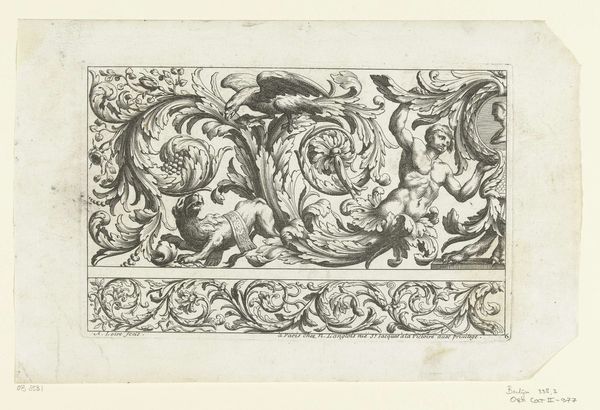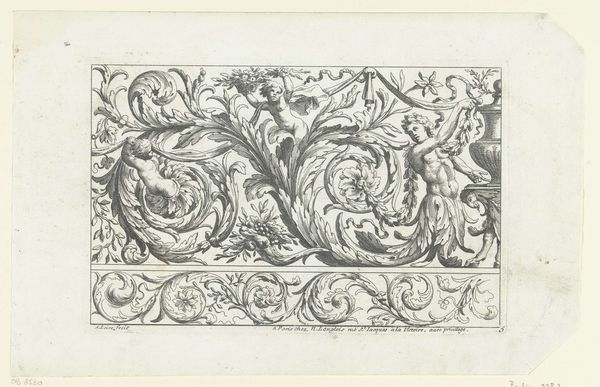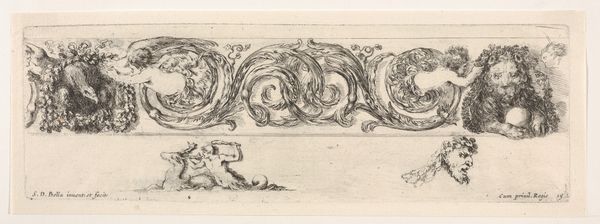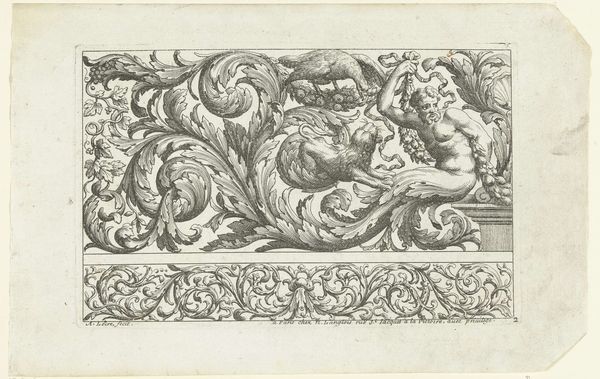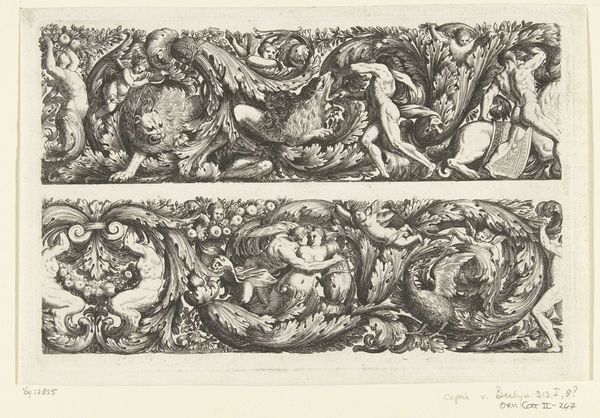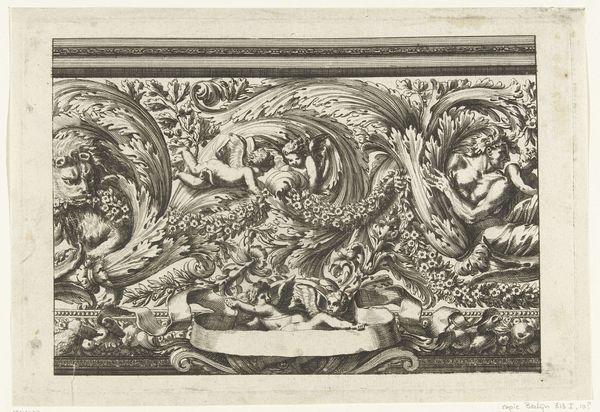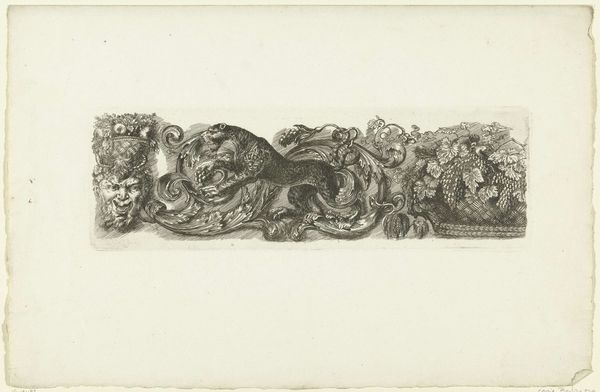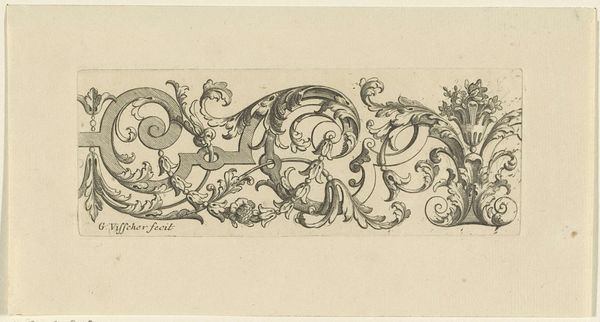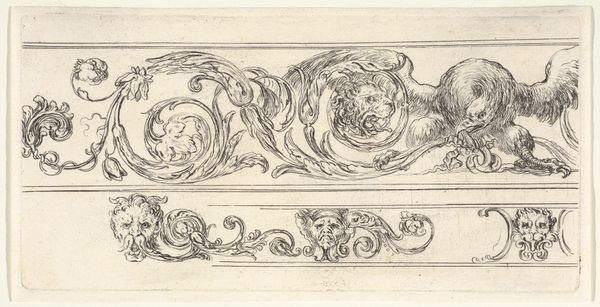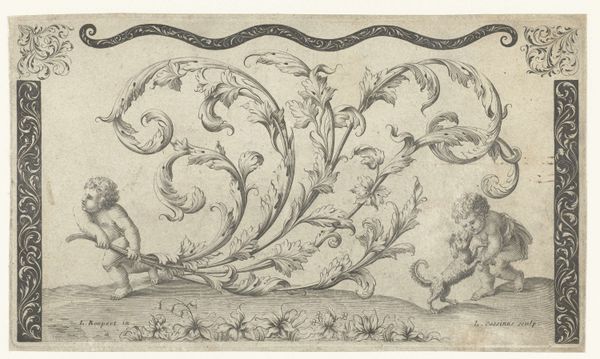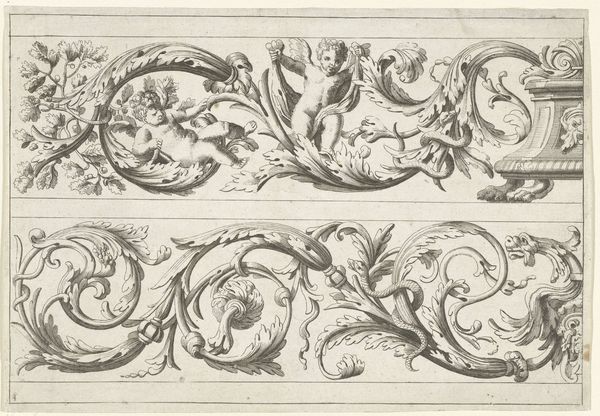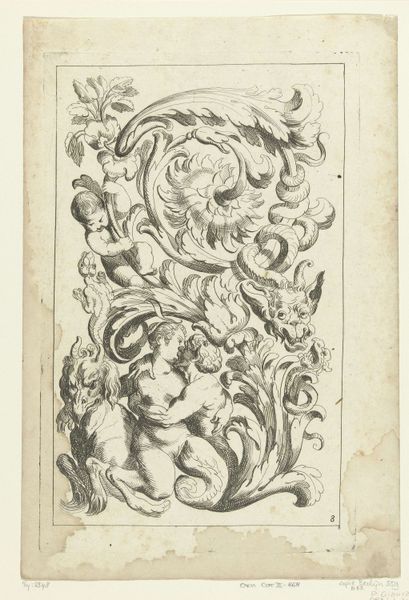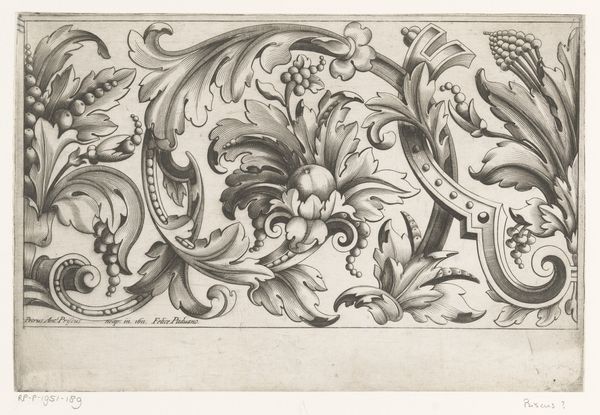
carving, print, intaglio, engraving
#
carving
#
allegory
#
baroque
# print
#
intaglio
#
old engraving style
#
figuration
#
decorative-art
#
engraving
Dimensions: height 147 mm, width 229 mm
Copyright: Rijks Museum: Open Domain
Editor: This engraving, titled "Sater, adelaar en twee putti tussen bladranken," translating to "Satyr, eagle, and two putti among leaf tendrils," was created by Alexis Loir around 1670 to 1690. I’m struck by how this black and white image captures so much dynamism. What kind of role would an artwork like this have played in the Baroque era? Curator: Well, this print, being an intaglio, likely served multiple purposes related to disseminating visual culture and ideals. Consider its imagery: a satyr, eagle, and putti all entwined with foliage. It's more than mere decoration. How do you think this decorative work would function in its original context, keeping in mind its allegorical components? Editor: It looks like an ideal decoration… maybe meant to ennoble its commissioner with references to mythical strength, perhaps? Curator: Exactly. In its time, imagery was intricately connected to power. The ability to own, commission, and display engravings like these advertised the commissioner's taste, wealth, and learning, shaping public perception of their status and authority within court circles. How was art viewed institutionally? Who was it created for? What type of taste did it respond to, and shape in return? All key questions to interpreting it through the lens of history. Editor: So it was less about the art for art's sake and more about… social posturing? Curator: Not exclusively, but deeply intertwined. The politics of imagery is a key component of the function of art at this time. Editor: This has given me a whole new appreciation for Baroque decorative prints. Curator: Indeed. Understanding its cultural and institutional context illuminates what this artwork communicates, beyond just its aesthetic appeal.
Comments
No comments
Be the first to comment and join the conversation on the ultimate creative platform.
